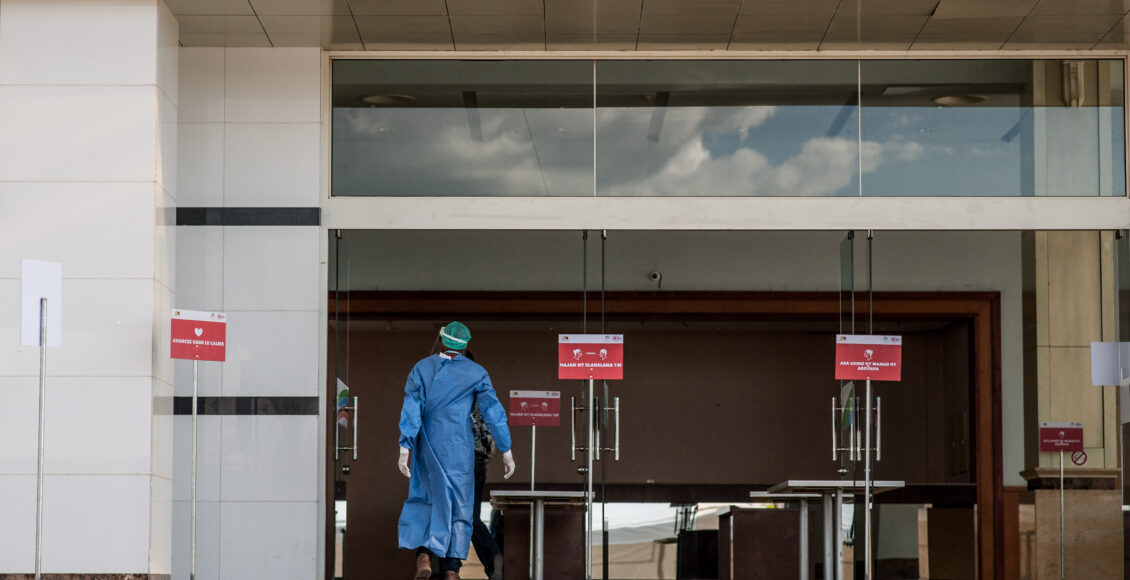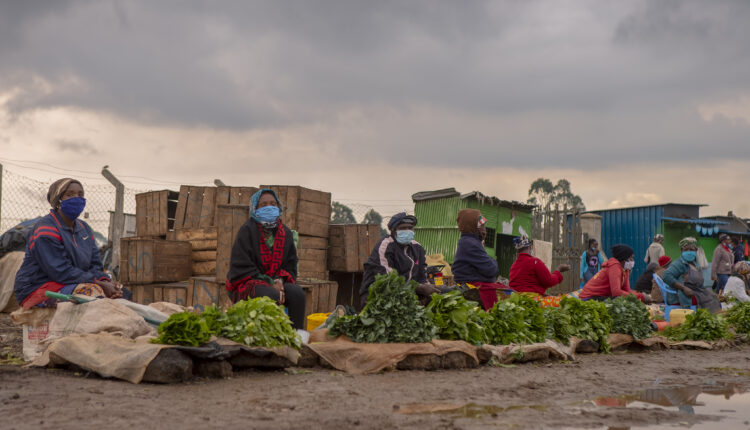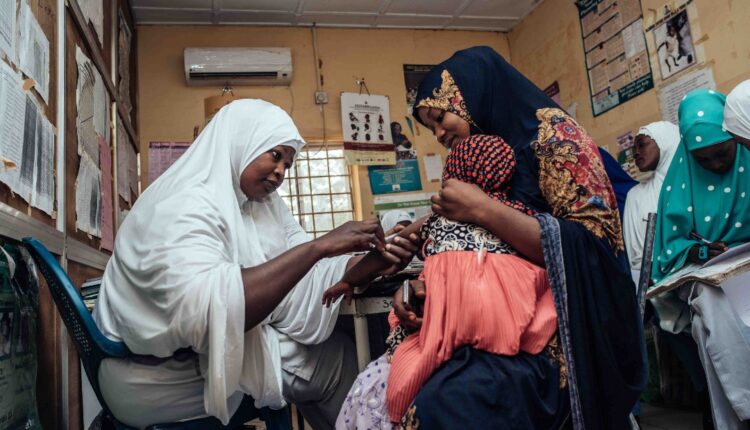COVID-19 is a Symptom of a Greater Global Pathology
 March 31, 2020 - MADAGASCAR.
March 31, 2020 - MADAGASCAR.
COVID-19’s impact has reached almost every corner of the world. For this reason, it has been dubbed the “great equalizer” by the likes of New York Governor Andrew Cuomo. This claim does not consider the nuances of socioeconomic inequalities that influence the impact of the pandemic on certain people, communities, and entire regions of the globe.
Instead of affecting everyone equally, the virus amplifies existing inequalities of all kinds. The pandemic has exacerbated weak links in global health infrastructure, particularly in the Global South. The political, social, and economic consequences will be potentially devastating for billions of people. Furthermore, the pandemic has the potential to halt or even regress progress made towards mitigating or eradicating a host of deadly diseases that continue to run rampant in some regions of the globe. A unified effort is required to combat not only COVID-19, but to continue the fight against widespread threats to health globally. In an era where people and nations are increasingly connected because of globalization, the effects of widespread inequality expand beyond arbitrary national borders.
There is a sentiment pervasive in the field of public health: the global health system is only as strong as its weakest link. With the rise of COVID-19, wealthier countries have the capability and opportunity to support health infrastructure globally, especially in the Global South, to limit widespread human suffering caused by the disease.
The disproportionate impacts of COVID-19 on nations in the Global South have already become evident. For example, Brazil is facing a difficult battle and has ascended to the second-most infected nation in the world, after only the United States. The World Health Organization (WHO) has declared South America as the latest epicentre of the pandemic, marking the virus’ dangerous shift from some of the largest economies in the world to low- and middle-income nations (LMINs). The United Nations Development Programme (UNDP) has predicted income losses resulting from the pandemic to exceed $220 billion USD in LMINs alone. As local epidemics increase in size and impact, socioeconomic inequalities manifesting in the form of inadequate healthcare infrastructure will become much more evident.
Efficient and functional healthcare is fundamental to the well-being and success of a nation. As the WHO contends, “healthy populations live longer, are more productive, and save more.” Access to healthcare is a human right. The WHO outlines that good health is also determined by other fundamental rights, such as access to clean drinking water and sanitation, nutrition, housing, education, and safe labour conditions. Healthcare, as a service funded by state governments, is a necessary part of holistic and intersectional infrastructural investments made to improve the livelihoods of citizens. Many social, political, and economic characteristics of a nation impact the quality of a healthcare system. For example, poor urban planning can make accessing hospitals or clinics difficult, inflation targets can constrain the spending necessary to improve healthcare, and civil service reforms can increase or limit the hiring of healthcare workers. It stands that healthcare is an essential element of a nation’s well-being.

Many diseases have long-term impacts on one’s health, especially when there is limited access to sufficient healthcare. Recovery does not always amount to fully healing, and this further necessitates sufficient healthcare infrastructure. The costs associated with long-term medical care as a result of chronic complications from disease or non-communicable diseases (such as cancer) drive millions of people into poverty annually. Poverty fundamentally shapes one’s ability to take care of one’s health, and the consequences of such deficiency can worsen the state of poverty. In regions where it is commonplace for an entire family to share one room, there is no possibility of social distancing if one member falls ill. Public health officials can advise constant hand-washing as much as they feel necessary, but it will fail to benefit those who cannot access clean and running water.
While the current pandemic still dominates headlines and much of the collective consciousness of the world, especially those in the Global North, it is imperative to remember the continuing impact of other endemic diseases that ravage parts of the globe. These include — but are not limited to — malaria, HIV/AIDS, and tuberculosis. A healthcare system that struggles to adequately confront such diseases is also vulnerable to becoming overwhelmed by other largely treatable ailments.
The rampant spread of HIV across the Global South, with many unaware of their infected status, will severely worsen the impact of COVID-19. This is because HIV is a co-morbid risk factor that significantly increases the risk of mortality when left untreated. The same co-morbid risk factor exists with the respiratory illness tuberculosis, which is often perceived as a disease of the past in the West. In reality, this is a harmful misconception: the disease continues to exist in the Global South, and 95 per cent of deaths are attributed to those living in economically impoverished regions. It is one of the top ten causes of death worldwide. Though medical advances have made TB largely curable and, more importantly, preventable, barriers to accessing appropriate healthcare have made the eradication of the disease difficult.

Low infant and maternal mortality rates are one of the principle characteristics of developed healthcare systems. Children in sub-Saharan Africa are 14 times more likely to die before the age of five than the rest of the world; they die from ailments such as pneumonia, diarrhea, and other diseases, many of which are largely treatable with access to sufficient healthcare. Disturbingly, the COVID-19 pandemic has severely impacted the distribution of routine childhood immunizations that are vital to the long-term fight against these deadly diseases. The UNICEF Chief, Henrietta H. Fore stated in a May 22, 2020 WHO briefing that, “We cannot let our fight against one disease come at the expense of long-term progress in the fight against other diseases. We cannot exchange one deadly disease for another. We need concerted efforts to put vaccinations back on track.” The importance of immunization is further highlighted when contemplating a potential COVID-19 vaccine or treatment — there must be appropriate infrastructure in place to ensure equitable distribution of that vaccine. Otherwise, global society will continue to lay vulnerable to the increasingly harmful consequences of the pandemic.
It is vital to understand these disparities in health infrastructure within a global framework to identify the institutions and actors that can explain and remedy vast global inequality. COVID-19 is a unique challenge in that it demands a unified course of action. There is no nation that is completely immune from its effects, and as disproportionate as these effects may be, they have been devastating to all. From this vantage point, it becomes clear that healthcare inequality must be swiftly addressed to overcome the challenges brought upon by COVID-19 and a host of other pervasive global health issues that affect millions of people annually. The United Nations’ Sustainable Development Goals have outlined global health targets, which include universal healthcare coverage and the eradication of AIDS, tuberculosis, malaria, and other rampant communicable diseases.
The COVID-19 pandemic, still in its early stages, has shown that these long-term public health goals can only come to fruition if nations wholly cooperate with one another to address systemic inequalities across the globe.
The feature image, “COVID-19 Testing” by Henitsoa Rafalia for the World Bank Photo Collection is licensed under CC BY-NC-ND 2.0.
Edited by Nina Russell
